RPG Requests
Re: RPG Requests
Yeah, seems a bit iffy to me...
However, if people here want to do some sort of Limited Life RPG, maybe we could base it off of Primal Carnage, considering all the excitement around here about it?
Now, obviously, the game isn't out and we don't know all the details, but it DOES give us a bit more freedom to do something with it. Maybe not so much Primal Carnage as it would just humans vs. dinos, to make it more unique. Maybe have a core plot, have people make characters (probably mainly humans, since Dinosaurs, except for larger predators, would be more along the lines of natural dangers), and go from there, kind of like an E-war with a limited plotline of some sort. What do you guys think? I'd be willing to come up with a plot if no one else wants to.
However, if people here want to do some sort of Limited Life RPG, maybe we could base it off of Primal Carnage, considering all the excitement around here about it?
Now, obviously, the game isn't out and we don't know all the details, but it DOES give us a bit more freedom to do something with it. Maybe not so much Primal Carnage as it would just humans vs. dinos, to make it more unique. Maybe have a core plot, have people make characters (probably mainly humans, since Dinosaurs, except for larger predators, would be more along the lines of natural dangers), and go from there, kind of like an E-war with a limited plotline of some sort. What do you guys think? I'd be willing to come up with a plot if no one else wants to.
"Heroes have morals. Villains have work ethic."
-Megatron
-Megatron
-

dinoman666 - Wyvern
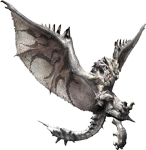
- Posts: 16382
- Joined: Tue May 15, 2007 8:55 pm
- Location: Wouldn't you like to know?
Re: RPG Requests
I think it coudl work... the problem, however that it could become too similar to ISS for dino players. Unless dinos are not allowed, of course... then there's no problem.
"If none can know what lies ahead, then losing one's way is just human nature."~ Yoshimitsu
"Would you hear my desire? To take this foul blade, and use it to blot out the light forever!" ~ Ganondorf
"Would you hear my desire? To take this foul blade, and use it to blot out the light forever!" ~ Ganondorf
-
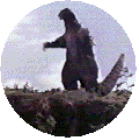
Godzilla Forever - Leviathan
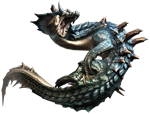
- Posts: 14715
- Joined: Sat Sep 05, 2009 3:19 am
- Location: In San Fransisco defeating the MUTOs.
Re: RPG Requests
I was thinking that dinos would be more along the lines of NPCs: controlled by players (probably just certain ones), but not actual characters, like the humans would be. With some exceptions, of course, like the classic "recurring T. rex villain" motif, and other bigger dinosaurs that'll make multiple appearances and probably effect the plot in some way. Even then, only certain dinosaurs could be used (Several different Raptors, Dilos, Allos, and a few other small-to-medium sized predators, and maybe a couple herbivores, though they couldn't really do much).
It'd be a bit restrictive, but I think that's really the only way to do a Limited Life RPG.
It'd be a bit restrictive, but I think that's really the only way to do a Limited Life RPG.
"Heroes have morals. Villains have work ethic."
-Megatron
-Megatron
-

dinoman666 - Wyvern

- Posts: 16382
- Joined: Tue May 15, 2007 8:55 pm
- Location: Wouldn't you like to know?
Re: RPG Requests
Eh, I agree! Though, I'ma now guilty for not even trusting in my own RPG idea...
"What's the plan?!" - random soldier, Mud and Blood 2.
Slow Posters Club
Slow Posters Club
-
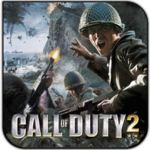
UndeadRaptor - Tyrannosaurus Rex
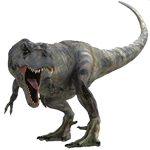
- Posts: 5314
- Joined: Thu Aug 12, 2010 2:54 am
- Location: Snipin' yo peeps in the tall grass
Re: RPG Requests
Yeah, not primal carnage specifically, but a dino rpg could work very well. Imagine the usual scenario. Stranded on an island full of dinosaurs, with rescue on it's way. A survival rpg, and eventually everyone gets rescued. Idea being that the survivors have to first make contact and then wait for rescue. To make it even more fun, you could have a limited number of seats on the rescue craft, with more players than seats. The same could be done with supplies and weapons throughout the RPG, causing conflict within the humans.
And relax UR, a lot of RPG ideas don't gather much support.
And relax UR, a lot of RPG ideas don't gather much support.

"**** off TT"-Doc 42
Trophy art by CompyScavanger
Slow Posters Club
- Doc 42
- Cool Guy Moderator
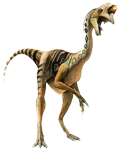
- Posts: 8618
- Joined: Fri Jan 05, 2007 9:20 pm
- Location: Ireland
Re: RPG Requests
Similar to what I was thinking, Doc. Sound good. Anyone else agree?
"Heroes have morals. Villains have work ethic."
-Megatron
-Megatron
-

dinoman666 - Wyvern

- Posts: 16382
- Joined: Tue May 15, 2007 8:55 pm
- Location: Wouldn't you like to know?
Re: RPG Requests
How about you put a new spin on this. Like The Lost World (TV show)
Where, instead of just dinosaurs, theres all sorts of things on the island, almost Skull Island like. Different species, a tribal civilization etc
Where, instead of just dinosaurs, theres all sorts of things on the island, almost Skull Island like. Different species, a tribal civilization etc

-
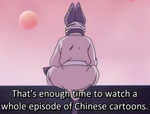
C S - Bae Fish
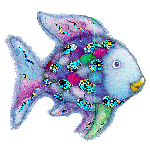
- Posts: 20156
- Joined: Sat May 19, 2007 11:34 pm
Re: RPG Requests
I'd go with that two!  double votes!
double votes!
"What's the plan?!" - random soldier, Mud and Blood 2.
Slow Posters Club
Slow Posters Club
-

UndeadRaptor - Tyrannosaurus Rex

- Posts: 5314
- Joined: Thu Aug 12, 2010 2:54 am
- Location: Snipin' yo peeps in the tall grass
Re: RPG Requests
A tribal civilization could add some interest to it, and maybe a couple extra, non-dinosaur species, but the number of species is still going to relatively limited, unlike RPGs like ISS. I'll worry about the details of that if this thing gets enough to votes to be made.
"Heroes have morals. Villains have work ethic."
-Megatron
-Megatron
-

dinoman666 - Wyvern

- Posts: 16382
- Joined: Tue May 15, 2007 8:55 pm
- Location: Wouldn't you like to know?
Re: RPG Requests
Maybe it can be on a planet with dinosaurs, liek the new turok? I don't know...
I like the "stranded on place with dinos and tribesmen" idea though.
I like the "stranded on place with dinos and tribesmen" idea though.
"If none can know what lies ahead, then losing one's way is just human nature."~ Yoshimitsu
"Would you hear my desire? To take this foul blade, and use it to blot out the light forever!" ~ Ganondorf
"Would you hear my desire? To take this foul blade, and use it to blot out the light forever!" ~ Ganondorf
-

Godzilla Forever - Leviathan

- Posts: 14715
- Joined: Sat Sep 05, 2009 3:19 am
- Location: In San Fransisco defeating the MUTOs.
Re: RPG Requests
It's probably just going to be limited to an island, where some sort of government experiment has gone awry (big surprise there), and they've sent a squad of mercenaries or soldiers to clean up the mess. This mess is, of course, dinosaurs that have been brought back from extinction. Unfortunately, they get stranded on the island, and there primary goal becomes getting in contact with the outside world so they can get out before they're all killed. I'm not actually sure how natives could fit in as of yet, but the occasional unique beastie (a result of the experimentation) could appear.
"Heroes have morals. Villains have work ethic."
-Megatron
-Megatron
-

dinoman666 - Wyvern

- Posts: 16382
- Joined: Tue May 15, 2007 8:55 pm
- Location: Wouldn't you like to know?
Re: RPG Requests
Sorry for the double post, but I need to put up my current idea of this RPG (Warning: ridiculously long list of dinos to follow!):
In the year 2010, a secret branch of the U.S. government known as the Office of Biological Studies (OBS) had discovered one of the many tiny, unmapped islands in the Pacific Ocean. After establishing a military outpost and research base here, OBS began to look into the ever-elusive subject of resurrection of prehistoric creatures, specifically dinosaurs. These reborn creatures would serve as biological warfare weapons that few could stand against. The so-called “Project Resurrection” was highly successful, and lasted for five years.
However, communication at this point was abruptly cut off from the island. Following procedure, the U.S. government refused to send any investigation teams for at least 6 months because of the sheer secrecy of this project.
Now, six months after the event, in 2015, a pair of troop transport helicopters are sent to the island, carrying a squad of hired mercenaries and a single employee of OBS to investigate what has happened, and to see if the operation can be salvaged. The mercenaries are unaware of what they are about to face on the island, which won’t end well if they wind up getting stranded…
Rules:
1. No powerplaying (no characters who are incredibly powerful and capable of killing everything in their path). Hopefully, since the characters will be almost exclusively modern humans, this won’t be a major issue.
2. No single sentence posts will be allowed unless they are useful to another player (ex: conversations that need the player being talked to to respond).
3. No player is allowed to kill off another player's character.
4. When writing in OOC, you MUST include some in-game writing about your character as well.
5. Only human characters are allowed. Dinosaurs are more realistic in this RPG than in ones like ISS. They are strictly NPCs.
Profile:
Name:
Gender:
Height:
Weight:
Physical Description:
Preferred Weapon (if any):
Personality:
History:
(Keep in mind, most of these characters will be mercenaries, and therefore will have some form of weapons training.)
Species:
Carnivores:
Velociraptor mongoliensis:
Length: 7 ft
Height: 2 ft at the hip
Weight: 30 lbs
Velociraptor is one of the most common predators on the island, traveling in large packs of 10-20 individuals. While small, they are remarkably intelligent and use cooperative pack-hunting techniques to bring down much larger prey. The sickle claw on the second toe of each foot is used primarily for piercing instead of slashing (though it can cut through thinner flesh in exposed areas on a prey item’s body). Velociraptors, like all theropods on the island, are territorial and very vicious. They do not shy away from large animals, and will attack humans on sight if hungry enough. Their bodies are covered in a coat of downy feathers, and they have more well-developed feathers on their arms, used primarily for display and insulation.
Deinonychus antirrhopus:
Length: 11 ft
Height: 3 ft at the hip
Weight: 160 lbs
Deinonychus is, in many ways, identical to Velociraptor in terms of physical features and behavior, but is far larger and more dangerous. Deinonychus live in packs of 5-10 and hunt on the more open plains of the island, compared to the forests where their smaller cousins dwell. Deinonychus’ snout is shorter and stockier than that of a Velociraptor, giving it a far more powerful bite (equal to that of an American alligator). They have a feathery covering similar to Velociraptor.
Utahraptor ostrommaysorum:
Length: 23 ft (reports of a Utahraptor with a length of nearly 36 ft are unconfirmed)
Height: 6 ft at the hip
Weight: 1,100 lbs
Utahraptor is the largest dromaeosaurid created on the island, and by far the most deadly. They are rarely found in groups, and are usually limited to pairs or simply alone. They hunt on the same plains that Deinonychus do, and the two species often come into conflict over territory. Their feathery body coverings are less ornate than those of Deinonychus or Velociraptor. Utahraptor is, for the most part, identical to its smaller cousins, but exponentially more deadly. The foot-long sickle claw on its toe can pierce through a humans’ skull.
Dilophosaurus wetherilli:
Length: 20 ft
Height: 5 ft at the hip
Weight: 1,000 lbs
Inspired by the Jurassic Park franchise, OBS genetically altered the Dilophosaurus when they resurrected it, giving it the ability to spit a paralyzing venom to blind and subdue prey. The Dilo specimens adapted to this trait remarkably well and use it to great effect in hunting. A Dilo’s jaws are rather weak, used for feeding rather than capturing and killing struggling prey, and it primarily relies on its clawed hands, long tail, and venom for attack and defense. Its double crest is used for display, not combat. Dilophosaurus is somewhat rare on the island, mostly limited to the coastline.
Ceratosaurus nasicornis:
Length: 25 ft
Height: 8 ft at the hip
Weight: 1,500 lbs
Characterized by a large nasal horn, spiny osteoderms down its back, and a long, flexible body with a crocodilian tail, Ceratosaurus is an unusual-looking, but otherwise standard, theropod. The horn is used for display and the occasional headbutting contest with rivals, and the long, flattened tail allows it to swim and catch aquatic prey to some degree. However, Ceratosaurus prefers scavenging and small dinosaurs, to avoid competition with the larger theropods on the island. Its teeth are particularly large for its size, and it has a very powerful bite. Ceratosaurus occasionally form small groups, but they do not possess the pack mentality of the maniraptorans.
Allosaurus fragilis:
Length: 35 ft
Height: 12 ft at the hip
Weight: 2,200 lbs
Allosaurus is one of the larger predators on the island, possessing a powerful bite and large, slashing claws on the forelimbs. Its jaw can unhinge like that of a snake, and the teeth are bladelike, giving the theropod the ability to slice through prey, using its upper jaw like a hatchet. Occasionally, Allosaurus will form packs to hunt down much larger prey, like sauropods. However, for the most part, they are solitary.
Tyrannosaurus rex:
Length: 40 ft (“Sue” is closer to 45 ft)
Height: 15 ft at the hip (“Sue” is around 20 ft at the hip)
Weight: 6 tons (“Sue” is nearly 7 tons)
Almost the largest carnivore on the island, Tyrannosaurus is also one of the most rare, with only a few individuals actually having been made. The largest, a female nicknamed “Sue” by the OBS staff working on Project Resurrection, is considered the apex predator on the island. T. rex in general is a very territorial and aggressive animal, defending its home with a fierceness unlike any other predator. Its bite force is unbelievably powerful, and is likely to compensate for the puny (but extremely strong) arms. Tyrannosaurus is not a particularly fast runner, however, only able to reach about 15-20 mph. Nonetheless, this is still faster than most of its prey. These massive beasts only have enough room to hunt in the more open areas of the island. Tyrannosaurus, while not particularly smart, appear to have long memories and can hold grudges. They have been known to pursue the same target for several days until they are finally successful in killing it.
Spinosaurus aegyptiacus:
Length: 50-60 ft
Height: 20 ft at the hip (nearly 25 ft at the tallest point on the spine)
Weight: 5-7 tons
The largest predator on the island, Spinosaurus is remarkably agile and quick for such a massive creature, but is less bulky than Tyrannosaurus. It lives in a similar manner to a grizzly bear, with a bias towards fishing, but still opportunistic enough to scavenge and go after small and medium-sized prey. Its long, crocodilian snout is suitable for these roles, and it is able to swim in the wide rivers of the island to hunt for prey. Its powerful arms are its main weapons in a battle, however, as the jaws are not particularly robust. Its sail is used for a variety of purposes, including thermoregulation and intimidation. The OBS has reported as only creating a single Spinosaurus. Whether or not this is actually true remains to be seen.
Compsognathus longipes:
Length: 3 ft
Height: 1 ft at the hip
Weight: 8 lbs
This little theropod is a fast, agile hunter of small vertebrates, such as lizards native to the island, and insects. Its sharp vision and quick reflexes make it well-suited in this role. However, Compsognathus (often referred to as "Compies") are also valuable to the environment in that they are opportunistic scavengers, picking clean any corpses they find after any other nearby predators and scavengers have eaten their fill.
Microraptor zhaoianus:
Length: 3 ft
Height: 1 ft at the hip
Weight: 2 lbs
One of the first theropods created by OBS, the Microraptor is an arboreal hunter of small insects and reptiles. Its feathery coating on its body provides insulation, and the advanced flight feathers on its arms and legs allow it to glide and even fly short distances. Mostly harmless to humans, but can deliver a nasty bite or scratch.
Deinosuchus rugosus:
Length: 40 ft
Weight: 8 tons
Only one specimen of Deinosuchus was created by OBS, as a test to see if it would be comfortable in salt water or not (and therefore be capable of escaping the island and causing potential havoc). As it turns out, it does not like saltwater environments, and was therefore released onto the island, where it lives in the rivers. More were planned to be resurrected, but communications ended before this could happen. Essentially a massive alligator, Deinosuchus prefers to lie in wait on the edge of a river and wait for prey to approach, before lunging up to grab it in its powerful jaws and drag it into the water to drown it.
Herbivores:
Parasaurolophus walkeri:
Length: 30 ft
Height: 10 ft at the hip
Weight: 3 tons
The most common of the three hardosaurids on the island, Parasaourolophus is a peaceful grazer that wanders in herds. Its long, curved head crest is partially hollow and connects to the nostrils, allowing the herbivore to produce a trumpeting call. This call can vary in pitch, and has several functions, such as a mating call and several warning calls for different predators. Parasaurolophus is most comfortable on all fours, but can run on two legs if necessary (its only other defense is its thick scales).
Lambeosaurus laticaudus:
Length: 50 ft
Height: 18 ft at the hip
Weight: 10 tons
The largest hardosaurid, and the most rare on the island, Lambeosaurus is a relatively typical herbivore, other than its large size, which is its primary defense against predators. Its hatchet-shaped crest is capable of producing calls like those of Parasaurolophus, but much deeper in pitch.
Edmontosaurus regalis:
Length: 40 ft
Height: 10 ft at the hip
Weight: 5 tons
Another typical hardosaurid, Edmontosaurus lacks any sort of head crest, and relies primarily on eyesight to detect predators. Unfortunately, Edmontosaurus is also relatively slow, even having trouble outpacing Tyrannosaurus (which hunts Edmontosaurus regularly).
Apatosaurus louisae:
Length: 72 ft
Height: 15 ft at the hip
Weight: 22 tons
One of the largest dinosaurs on the island, Apatosaurus is a massive sauropod with few predators. For the most part, it is a gentle giant, content to feed all through the day to fuel its enormous body. The whiplike end of its tail is an effective weapon and can produce a cracking sound of over 200 decibels.
Brachiosaurus altithorax:
Length: 85 ft
Height: 60 ft to the top of the head
Weight: 35 tons
An impressively massive creature, Brachiosaurus has no predators on the island other than natural disasters. They are often seen traveling in small herds across the plains, devouring the plant life around them. Fortunately for the island's ecology, there are only a few Brachiosaurus on the island.
Amargasaurus cazaui:
Length: 33 ft
Height: 10 ft at the hip
Weight: 5 tons
Amargasaurus is the smallest of the three sauropods on the island, but is by no means defenseless. The bizarre double rows of spikes along the back of its neck makes it an extremely difficult target for even the largest of predators. Like Apatosaurus, it is mostly a simple grazer, wandering in large herds.
Triceratops horridus:
Length: 30 ft
Height: 8 ft at the hip
Weight: 12 tons
This heavyweight, aggressive herbivore is by far one of the most rare, with only a couple small herds known to exist on the island. With a thick, bony frill and a trio of long, sharp horns, no predator dares to attack Triceratops from the front. With a similar temperament to rhinos, Triceratops will not hesitate to charge at any nearby creature, whether or not it is a legitimate threat.
Stegosaurus armatus:
Length: 30 ft
Height: 14 ft at the tip of the tallest plate
Weight: 5 tons
Another armored dinosaur, Stegosaurus is relatively rare on the island, similar to Triceratops. It is equally dangerous as well, and is particularly unintelligent, even for an herbivore. In addition to the fantastic thermoregulating plates on its back, Stegosaurus possesses armor around its throat and four tall spikes on the end of its tail as a defense against predators.
Ankylosaurus magniventris:
Length: 30 ft
Height: 5 ft at the hip
Weight: 6 tons
Nearly completely covered in armor plating, Ankylosaurus is a walking tank, and possesses a bony knob at the end of its tail that functions like a gigantic club. A single swing can break the legs of a Tyrannosaurus. Needless to say, Ankylosaurus are rarely perturbed by the predators of the island, though Utahraptor is known to lure Ankylosaurus into lethal traps that usually involve flipping it over to expose its soft underbelly, or even forcing it to fall to its death off cliffs or into rivers.
Hypsilophodon foxii:
Length: 6 ft
Height: 3 ft at the hip
Weight: 120 lbs
The most common herbivore on the island, Hypsilophodon is a speedy and skittish creature. Unsurprising, as it is the main food staple for many of the island’s theropods. Its only defenses are the ability to hide in forested areas (thanks to its green and brown patterning) and its sheer speed.
Pachycephalosaurus wyomingensis:
Length: 16 ft
Height: 5 ft at the hip
Weight: 2 tons
Pachycephalosaurus’s skull, which is capped with a dome of bone 10 inches thick, makes an effective weapon against smaller predators, capable of brutally smacking away maniraptorans and even larger predators like Dilophosaurus. However, this is a temporary defense at best, and Pachycephalosaurus is more likely to run than fight, unless its young are threatened. This bony head is also used to push against rival members of a herd to establish dominance (it is not used in a charging headbutt against another Pachycephalosaurus, as the round dome can slip to the side or miss completely). Younger Pachycephalosaurus have differently-shaped domes, starting out flat, with more ornate spikes, and rapidly growing in size while the spikes shrink into small, spiky knobs.
Thescelosaurus neglectus:
Length: 8 ft
Height: 5 ft at the hip
Weight: 450 lbs
Thescelosaurus is a fairly basic ornithopod dinosaur, and is relatively common in the forested areas of the island, feeding primarily on ferns and conifers. Like Hypsilophodon, its primary defense is speed.
As a side note, to any of the admins that are interested, I can always tell you the full extent of the plot to some degree.
In the year 2010, a secret branch of the U.S. government known as the Office of Biological Studies (OBS) had discovered one of the many tiny, unmapped islands in the Pacific Ocean. After establishing a military outpost and research base here, OBS began to look into the ever-elusive subject of resurrection of prehistoric creatures, specifically dinosaurs. These reborn creatures would serve as biological warfare weapons that few could stand against. The so-called “Project Resurrection” was highly successful, and lasted for five years.
However, communication at this point was abruptly cut off from the island. Following procedure, the U.S. government refused to send any investigation teams for at least 6 months because of the sheer secrecy of this project.
Now, six months after the event, in 2015, a pair of troop transport helicopters are sent to the island, carrying a squad of hired mercenaries and a single employee of OBS to investigate what has happened, and to see if the operation can be salvaged. The mercenaries are unaware of what they are about to face on the island, which won’t end well if they wind up getting stranded…
Rules:
1. No powerplaying (no characters who are incredibly powerful and capable of killing everything in their path). Hopefully, since the characters will be almost exclusively modern humans, this won’t be a major issue.
2. No single sentence posts will be allowed unless they are useful to another player (ex: conversations that need the player being talked to to respond).
3. No player is allowed to kill off another player's character.
4. When writing in OOC, you MUST include some in-game writing about your character as well.
5. Only human characters are allowed. Dinosaurs are more realistic in this RPG than in ones like ISS. They are strictly NPCs.
Profile:
Name:
Gender:
Height:
Weight:
Physical Description:
Preferred Weapon (if any):
Personality:
History:
(Keep in mind, most of these characters will be mercenaries, and therefore will have some form of weapons training.)
Species:
Carnivores:
Velociraptor mongoliensis:
Length: 7 ft
Height: 2 ft at the hip
Weight: 30 lbs
Velociraptor is one of the most common predators on the island, traveling in large packs of 10-20 individuals. While small, they are remarkably intelligent and use cooperative pack-hunting techniques to bring down much larger prey. The sickle claw on the second toe of each foot is used primarily for piercing instead of slashing (though it can cut through thinner flesh in exposed areas on a prey item’s body). Velociraptors, like all theropods on the island, are territorial and very vicious. They do not shy away from large animals, and will attack humans on sight if hungry enough. Their bodies are covered in a coat of downy feathers, and they have more well-developed feathers on their arms, used primarily for display and insulation.
Deinonychus antirrhopus:
Length: 11 ft
Height: 3 ft at the hip
Weight: 160 lbs
Deinonychus is, in many ways, identical to Velociraptor in terms of physical features and behavior, but is far larger and more dangerous. Deinonychus live in packs of 5-10 and hunt on the more open plains of the island, compared to the forests where their smaller cousins dwell. Deinonychus’ snout is shorter and stockier than that of a Velociraptor, giving it a far more powerful bite (equal to that of an American alligator). They have a feathery covering similar to Velociraptor.
Utahraptor ostrommaysorum:
Length: 23 ft (reports of a Utahraptor with a length of nearly 36 ft are unconfirmed)
Height: 6 ft at the hip
Weight: 1,100 lbs
Utahraptor is the largest dromaeosaurid created on the island, and by far the most deadly. They are rarely found in groups, and are usually limited to pairs or simply alone. They hunt on the same plains that Deinonychus do, and the two species often come into conflict over territory. Their feathery body coverings are less ornate than those of Deinonychus or Velociraptor. Utahraptor is, for the most part, identical to its smaller cousins, but exponentially more deadly. The foot-long sickle claw on its toe can pierce through a humans’ skull.
Dilophosaurus wetherilli:
Length: 20 ft
Height: 5 ft at the hip
Weight: 1,000 lbs
Inspired by the Jurassic Park franchise, OBS genetically altered the Dilophosaurus when they resurrected it, giving it the ability to spit a paralyzing venom to blind and subdue prey. The Dilo specimens adapted to this trait remarkably well and use it to great effect in hunting. A Dilo’s jaws are rather weak, used for feeding rather than capturing and killing struggling prey, and it primarily relies on its clawed hands, long tail, and venom for attack and defense. Its double crest is used for display, not combat. Dilophosaurus is somewhat rare on the island, mostly limited to the coastline.
Ceratosaurus nasicornis:
Length: 25 ft
Height: 8 ft at the hip
Weight: 1,500 lbs
Characterized by a large nasal horn, spiny osteoderms down its back, and a long, flexible body with a crocodilian tail, Ceratosaurus is an unusual-looking, but otherwise standard, theropod. The horn is used for display and the occasional headbutting contest with rivals, and the long, flattened tail allows it to swim and catch aquatic prey to some degree. However, Ceratosaurus prefers scavenging and small dinosaurs, to avoid competition with the larger theropods on the island. Its teeth are particularly large for its size, and it has a very powerful bite. Ceratosaurus occasionally form small groups, but they do not possess the pack mentality of the maniraptorans.
Allosaurus fragilis:
Length: 35 ft
Height: 12 ft at the hip
Weight: 2,200 lbs
Allosaurus is one of the larger predators on the island, possessing a powerful bite and large, slashing claws on the forelimbs. Its jaw can unhinge like that of a snake, and the teeth are bladelike, giving the theropod the ability to slice through prey, using its upper jaw like a hatchet. Occasionally, Allosaurus will form packs to hunt down much larger prey, like sauropods. However, for the most part, they are solitary.
Tyrannosaurus rex:
Length: 40 ft (“Sue” is closer to 45 ft)
Height: 15 ft at the hip (“Sue” is around 20 ft at the hip)
Weight: 6 tons (“Sue” is nearly 7 tons)
Almost the largest carnivore on the island, Tyrannosaurus is also one of the most rare, with only a few individuals actually having been made. The largest, a female nicknamed “Sue” by the OBS staff working on Project Resurrection, is considered the apex predator on the island. T. rex in general is a very territorial and aggressive animal, defending its home with a fierceness unlike any other predator. Its bite force is unbelievably powerful, and is likely to compensate for the puny (but extremely strong) arms. Tyrannosaurus is not a particularly fast runner, however, only able to reach about 15-20 mph. Nonetheless, this is still faster than most of its prey. These massive beasts only have enough room to hunt in the more open areas of the island. Tyrannosaurus, while not particularly smart, appear to have long memories and can hold grudges. They have been known to pursue the same target for several days until they are finally successful in killing it.
Spinosaurus aegyptiacus:
Length: 50-60 ft
Height: 20 ft at the hip (nearly 25 ft at the tallest point on the spine)
Weight: 5-7 tons
The largest predator on the island, Spinosaurus is remarkably agile and quick for such a massive creature, but is less bulky than Tyrannosaurus. It lives in a similar manner to a grizzly bear, with a bias towards fishing, but still opportunistic enough to scavenge and go after small and medium-sized prey. Its long, crocodilian snout is suitable for these roles, and it is able to swim in the wide rivers of the island to hunt for prey. Its powerful arms are its main weapons in a battle, however, as the jaws are not particularly robust. Its sail is used for a variety of purposes, including thermoregulation and intimidation. The OBS has reported as only creating a single Spinosaurus. Whether or not this is actually true remains to be seen.
Compsognathus longipes:
Length: 3 ft
Height: 1 ft at the hip
Weight: 8 lbs
This little theropod is a fast, agile hunter of small vertebrates, such as lizards native to the island, and insects. Its sharp vision and quick reflexes make it well-suited in this role. However, Compsognathus (often referred to as "Compies") are also valuable to the environment in that they are opportunistic scavengers, picking clean any corpses they find after any other nearby predators and scavengers have eaten their fill.
Microraptor zhaoianus:
Length: 3 ft
Height: 1 ft at the hip
Weight: 2 lbs
One of the first theropods created by OBS, the Microraptor is an arboreal hunter of small insects and reptiles. Its feathery coating on its body provides insulation, and the advanced flight feathers on its arms and legs allow it to glide and even fly short distances. Mostly harmless to humans, but can deliver a nasty bite or scratch.
Deinosuchus rugosus:
Length: 40 ft
Weight: 8 tons
Only one specimen of Deinosuchus was created by OBS, as a test to see if it would be comfortable in salt water or not (and therefore be capable of escaping the island and causing potential havoc). As it turns out, it does not like saltwater environments, and was therefore released onto the island, where it lives in the rivers. More were planned to be resurrected, but communications ended before this could happen. Essentially a massive alligator, Deinosuchus prefers to lie in wait on the edge of a river and wait for prey to approach, before lunging up to grab it in its powerful jaws and drag it into the water to drown it.
Herbivores:
Parasaurolophus walkeri:
Length: 30 ft
Height: 10 ft at the hip
Weight: 3 tons
The most common of the three hardosaurids on the island, Parasaourolophus is a peaceful grazer that wanders in herds. Its long, curved head crest is partially hollow and connects to the nostrils, allowing the herbivore to produce a trumpeting call. This call can vary in pitch, and has several functions, such as a mating call and several warning calls for different predators. Parasaurolophus is most comfortable on all fours, but can run on two legs if necessary (its only other defense is its thick scales).
Lambeosaurus laticaudus:
Length: 50 ft
Height: 18 ft at the hip
Weight: 10 tons
The largest hardosaurid, and the most rare on the island, Lambeosaurus is a relatively typical herbivore, other than its large size, which is its primary defense against predators. Its hatchet-shaped crest is capable of producing calls like those of Parasaurolophus, but much deeper in pitch.
Edmontosaurus regalis:
Length: 40 ft
Height: 10 ft at the hip
Weight: 5 tons
Another typical hardosaurid, Edmontosaurus lacks any sort of head crest, and relies primarily on eyesight to detect predators. Unfortunately, Edmontosaurus is also relatively slow, even having trouble outpacing Tyrannosaurus (which hunts Edmontosaurus regularly).
Apatosaurus louisae:
Length: 72 ft
Height: 15 ft at the hip
Weight: 22 tons
One of the largest dinosaurs on the island, Apatosaurus is a massive sauropod with few predators. For the most part, it is a gentle giant, content to feed all through the day to fuel its enormous body. The whiplike end of its tail is an effective weapon and can produce a cracking sound of over 200 decibels.
Brachiosaurus altithorax:
Length: 85 ft
Height: 60 ft to the top of the head
Weight: 35 tons
An impressively massive creature, Brachiosaurus has no predators on the island other than natural disasters. They are often seen traveling in small herds across the plains, devouring the plant life around them. Fortunately for the island's ecology, there are only a few Brachiosaurus on the island.
Amargasaurus cazaui:
Length: 33 ft
Height: 10 ft at the hip
Weight: 5 tons
Amargasaurus is the smallest of the three sauropods on the island, but is by no means defenseless. The bizarre double rows of spikes along the back of its neck makes it an extremely difficult target for even the largest of predators. Like Apatosaurus, it is mostly a simple grazer, wandering in large herds.
Triceratops horridus:
Length: 30 ft
Height: 8 ft at the hip
Weight: 12 tons
This heavyweight, aggressive herbivore is by far one of the most rare, with only a couple small herds known to exist on the island. With a thick, bony frill and a trio of long, sharp horns, no predator dares to attack Triceratops from the front. With a similar temperament to rhinos, Triceratops will not hesitate to charge at any nearby creature, whether or not it is a legitimate threat.
Stegosaurus armatus:
Length: 30 ft
Height: 14 ft at the tip of the tallest plate
Weight: 5 tons
Another armored dinosaur, Stegosaurus is relatively rare on the island, similar to Triceratops. It is equally dangerous as well, and is particularly unintelligent, even for an herbivore. In addition to the fantastic thermoregulating plates on its back, Stegosaurus possesses armor around its throat and four tall spikes on the end of its tail as a defense against predators.
Ankylosaurus magniventris:
Length: 30 ft
Height: 5 ft at the hip
Weight: 6 tons
Nearly completely covered in armor plating, Ankylosaurus is a walking tank, and possesses a bony knob at the end of its tail that functions like a gigantic club. A single swing can break the legs of a Tyrannosaurus. Needless to say, Ankylosaurus are rarely perturbed by the predators of the island, though Utahraptor is known to lure Ankylosaurus into lethal traps that usually involve flipping it over to expose its soft underbelly, or even forcing it to fall to its death off cliffs or into rivers.
Hypsilophodon foxii:
Length: 6 ft
Height: 3 ft at the hip
Weight: 120 lbs
The most common herbivore on the island, Hypsilophodon is a speedy and skittish creature. Unsurprising, as it is the main food staple for many of the island’s theropods. Its only defenses are the ability to hide in forested areas (thanks to its green and brown patterning) and its sheer speed.
Pachycephalosaurus wyomingensis:
Length: 16 ft
Height: 5 ft at the hip
Weight: 2 tons
Pachycephalosaurus’s skull, which is capped with a dome of bone 10 inches thick, makes an effective weapon against smaller predators, capable of brutally smacking away maniraptorans and even larger predators like Dilophosaurus. However, this is a temporary defense at best, and Pachycephalosaurus is more likely to run than fight, unless its young are threatened. This bony head is also used to push against rival members of a herd to establish dominance (it is not used in a charging headbutt against another Pachycephalosaurus, as the round dome can slip to the side or miss completely). Younger Pachycephalosaurus have differently-shaped domes, starting out flat, with more ornate spikes, and rapidly growing in size while the spikes shrink into small, spiky knobs.
Thescelosaurus neglectus:
Length: 8 ft
Height: 5 ft at the hip
Weight: 450 lbs
Thescelosaurus is a fairly basic ornithopod dinosaur, and is relatively common in the forested areas of the island, feeding primarily on ferns and conifers. Like Hypsilophodon, its primary defense is speed.
As a side note, to any of the admins that are interested, I can always tell you the full extent of the plot to some degree.
Last edited by dinoman666 on Mon Feb 28, 2011 12:48 am, edited 2 times in total.
"Heroes have morals. Villains have work ethic."
-Megatron
-Megatron
-

dinoman666 - Wyvern

- Posts: 16382
- Joined: Tue May 15, 2007 8:55 pm
- Location: Wouldn't you like to know?
Re: RPG Requests
This looks like it could be fun. Will there be chainguns?!
"If none can know what lies ahead, then losing one's way is just human nature."~ Yoshimitsu
"Would you hear my desire? To take this foul blade, and use it to blot out the light forever!" ~ Ganondorf
"Would you hear my desire? To take this foul blade, and use it to blot out the light forever!" ~ Ganondorf
-

Godzilla Forever - Leviathan

- Posts: 14715
- Joined: Sat Sep 05, 2009 3:19 am
- Location: In San Fransisco defeating the MUTOs.
Re: RPG Requests
...possibly. >.> Keep in mind, these are hired guns. If, for some reason, one had a chaingun, don't expect it to last very long. The OBS didn't exactly plan on having extra ammo for one lying around.
"Heroes have morals. Villains have work ethic."
-Megatron
-Megatron
-

dinoman666 - Wyvern

- Posts: 16382
- Joined: Tue May 15, 2007 8:55 pm
- Location: Wouldn't you like to know?
Re: RPG Requests
Oh. Still, that doesn't make this an any less awesome idea!
"If none can know what lies ahead, then losing one's way is just human nature."~ Yoshimitsu
"Would you hear my desire? To take this foul blade, and use it to blot out the light forever!" ~ Ganondorf
"Would you hear my desire? To take this foul blade, and use it to blot out the light forever!" ~ Ganondorf
-

Godzilla Forever - Leviathan

- Posts: 14715
- Joined: Sat Sep 05, 2009 3:19 am
- Location: In San Fransisco defeating the MUTOs.
Re: RPG Requests
Well, I suppose that's one vote then. 
"Heroes have morals. Villains have work ethic."
-Megatron
-Megatron
-

dinoman666 - Wyvern

- Posts: 16382
- Joined: Tue May 15, 2007 8:55 pm
- Location: Wouldn't you like to know?
Re: RPG Requests
You already got 21 votes, dude! 2+1=21... wait, what now?
"What's the plan?!" - random soldier, Mud and Blood 2.
Slow Posters Club
Slow Posters Club
-

UndeadRaptor - Tyrannosaurus Rex

- Posts: 5314
- Joined: Thu Aug 12, 2010 2:54 am
- Location: Snipin' yo peeps in the tall grass
Re: RPG Requests
Alright then, just one more vote, then acceptance from a moderator/admin, and we're all set.
Oh, and keep in mind, if this does get made, the NPC dinosaurs will probably be controlled by only myself and a couple other people I tell the plot to (most likely admins), to keep dinos from jumping in out of nowhere at inconvenient times...
Oh, and keep in mind, if this does get made, the NPC dinosaurs will probably be controlled by only myself and a couple other people I tell the plot to (most likely admins), to keep dinos from jumping in out of nowhere at inconvenient times...
"Heroes have morals. Villains have work ethic."
-Megatron
-Megatron
-

dinoman666 - Wyvern

- Posts: 16382
- Joined: Tue May 15, 2007 8:55 pm
- Location: Wouldn't you like to know?
Re: RPG Requests
May I make a suggestion? How's about rather than just one little plot... we keep the RPG running longer with multiple plots that'll happen after one is through with! That way it'll be a limited life thing for like a few characters at a time!
"What's the plan?!" - random soldier, Mud and Blood 2.
Slow Posters Club
Slow Posters Club
-

UndeadRaptor - Tyrannosaurus Rex

- Posts: 5314
- Joined: Thu Aug 12, 2010 2:54 am
- Location: Snipin' yo peeps in the tall grass
Re: RPG Requests
It'll be more like one, overarching plot, with a few subplots to keep the action going. Character conflicts and things like that will be more up to the players.
"Heroes have morals. Villains have work ethic."
-Megatron
-Megatron
-

dinoman666 - Wyvern

- Posts: 16382
- Joined: Tue May 15, 2007 8:55 pm
- Location: Wouldn't you like to know?
Return to Collaborative Fiction
Who is online
Users browsing this forum: No registered users and 11 guests
Powered by phpBB © 2000, 2002, 2005, 2007 phpBB Group
SoftWood design by Free Forum
Time : 0.051s | 10 Queries | GZIP : Off
SoftWood design by Free Forum
Time : 0.051s | 10 Queries | GZIP : Off
